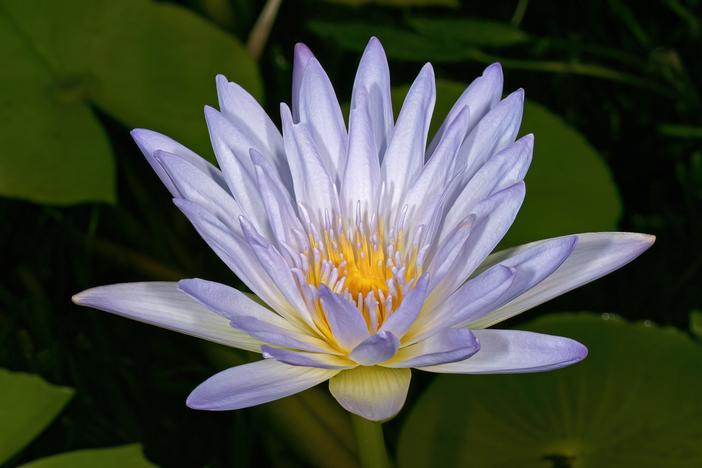Blue Lotus
(Nymphaea nouchali var. caerulea)
Blue Lotus (Nymphaea nouchali var. caerulea)
/
/

SAplants
CC BY-SA 4.0
Image By:
SAplants
Recorded By:
Copyright:
CC BY-SA 4.0
Copyright Notice:
Photo by: SAplants | License Type: CC BY-SA 4.0 | License URL: https://creativecommons.org/licenses/by-sa/4.0 | Uploader: SAplants | Publisher: Wikipedia Commons














Estimated Native Range
Summary
Nymphaea nouchali var. caerulea, commonly known as Blue Lotus or Blue Water Lily, is an aquatic perennial herb native to standing fresh water habitats like lakes, ponds, and slow-moving streams in Africa and parts of the Arabian Peninsula, including Yemen and Oman. It typically spreads to about 3 feet in diameter and has a striking appearance with its star-shaped flowers that can be blue, white, mauve, or pink, blooming from spring to fall. The flowers are quite showy and are held above the water’s surface on sturdy stalks, while the round leaves float on the water, providing shade and habitat for aquatic life.
Blue Lotus is valued for its ornamental beauty and historical significance, often used in water gardens and ponds for its aesthetic appeal and as a natural water purifier. It prefers full sun but can tolerate part shade, and while it can survive in nutrient-poor conditions, it thrives in rich, loamy soils. Regular fertilization can enhance flowering. It is relatively low maintenance but may require division every few years to manage its spread. In cultivation, it is important to ensure that it does not become invasive, as it has in some regions outside its native range. The plant has a history of cultural importance, particularly in Ancient Egyptian religion, where it was associated with the sun god Ra.CC BY-SA 4.0
Blue Lotus is valued for its ornamental beauty and historical significance, often used in water gardens and ponds for its aesthetic appeal and as a natural water purifier. It prefers full sun but can tolerate part shade, and while it can survive in nutrient-poor conditions, it thrives in rich, loamy soils. Regular fertilization can enhance flowering. It is relatively low maintenance but may require division every few years to manage its spread. In cultivation, it is important to ensure that it does not become invasive, as it has in some regions outside its native range. The plant has a history of cultural importance, particularly in Ancient Egyptian religion, where it was associated with the sun god Ra.CC BY-SA 4.0
Plant Description
- Plant Type: Herb
- Height: 1-2 feet
- Width: 1.75-6.5 feet
- Growth Rate: Moderate
- Flower Color: Blue
- Flowering Season: Summer
- Leaf Retention: Semi-deciduous
Growth Requirements
- Sun: Full Sun
- Water: High, Aquatic
- Drainage: Standing
Common Uses
Fragrant, Potted Plant, Water Garden
Natural Habitat
native to standing fresh water habitats like lakes, ponds, and slow-moving streams in Africa and parts of the Arabian Peninsula, including Yemen and Oman
Other Names
Common Names: Blue Egyptian Water Lily, Sacred Blue Lily, Blue Lotus
Scientific Names: , Nymphaea nouchali var. caerulea, Castalia caerulea, Castalia capensis, Castalia scutifolia, Castalia zanzibariensis, Leuconymphaea berneriana, Leuconymphaea caerulea, Leuconymphaea emirnensis, Nymphaea bernieriana
GBIF Accepted Name: